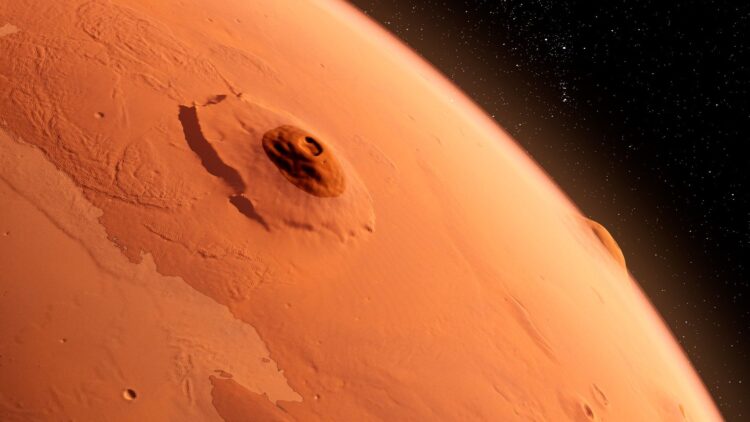Sometimes, it’s really hard to see the volcanoes for the rocks, especially if you’re just a one-ton rover all alone in a remote crater on Mars. Nevertheless, a bump on the rim of Jezero Crater is indeed a volcano, scientists have ruled – and the finding, thanks to NASA’s Perseverance rover, has really exciting implications.
Thus, NASA has recently found a volcano beneath Gale Crater on Mars. This space mission represents a breakthrough in science and planetary geology, in which volcanism is being studied next to the Martian surface. Read on to get to know all details.
“Volcanism on Mars is intriguing for a number of reasons”
The planetary scientist James Wray, from the Georgia Institute of Technology explained that volcanism on Mars is intriguing for a number of reasons – from the implications it has on habitability, to better constraining the geologic background.
Wray noticed the mountain, named Jezero Mons, back in 2007, but there wasn’t enough evidences to support the interpretation that it was a volcano. Then Perseverance began finding volcanic rocks on the crater floor. Suspicions grew that Jezero Mons may have burst upward from Mars’ molten interior.
“Jezero Crater is one of the best studied sites on Mars. If we are just now identifying a volcano here, imagine how many more could be on Mars. Volcanoes may be even more widespread across Mars than we thought.”
In order to confirm speculations: looking for known characteristics of volcanoes here on Earth
To confirm speculations, a team whose leader is the planetary scientist Sara Cuevas-Quiñones of Georgia Tech decided to conduct a thorough study, looking for known features of volcanoes here on Earth.
“We used data from the Mars Odyssey Orbiter, Mars Reconnaissance Orbiter, ExoMars Trace Gas Orbiter, and Perseverance Rover, all in combination to make this out,” Wray exposes.
Their conclusion? Jezero Mons is volcanic. It even has a volcanic crater. It’s not active now, and likely hasn’t been for a very long time, but this identification will make Perseverance’s findings not that hard to comprehend. There’s another interesting happening: Jezero Crater was a lake back in the past. If it was sitting right next to a steaming pile of active volcano, the conditions may have been warm enough in the lake for life.
“The coalescence of these two kind of systems makes Jezero more interesting than ever,” Wray says. “We have samples of incredible sedimentary rocks that could be from a habitable area alongside igneous rocks with relevant scientific value.”
Diverse set of geologic materials span most of Jezero crater’s floor: scientific information
A different set of geologic materials span most of Jezero crater’s floor. In addition, variably outcropping around the crater floor margins is a light-toned rock unit exhibiting spectral signatures of olivine, and hydration; pre-landing hypotheses for its origin included lacustrine sedimentary fill, aeolian sandstone, or volcanicash.
Several observations have instead revealed this unit (Séítah formation) to be a lightly altered olivine cumulate rock, whereas this light-toned rock unit predates the deltas, a darker-toned rock unit of more uncertain age dominates the central crater floor, with spectral signatures of pyroxene and a thickness up to ~10m at its margins. This darker-toned unit was originally interpreted as volcanic,butfluvial or aeolian sedimentary origins were also suggested by the Perseverancescience team prior to landing. Perseverance observations have since found this unit likely some pyroclastic layers.
Data availabililty
All data used for this work are publicly available. CRISM data and the software toolkit we used to analyze them can be downloaded from :
- NASA’s Planetary Data System
- HiRISE images
DTMs can be accessed at: https://www.uahirise.org. CaSSIS images are available at https://observations.cassis.unibe.ch. Other planetary datasets and visualization capabilities are avail able within the free JMARS software provided by Arizona State University (https://jmars.asu.edu).

